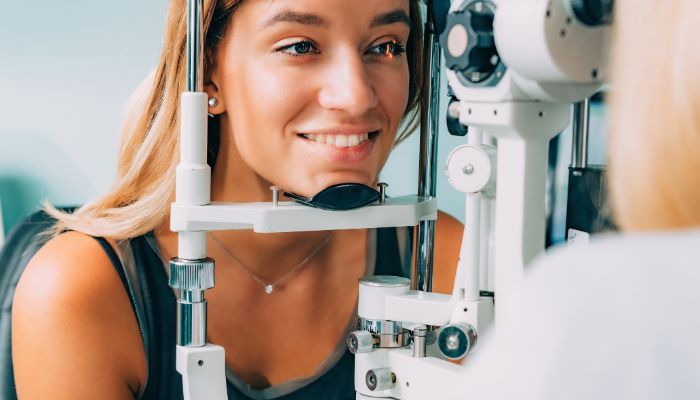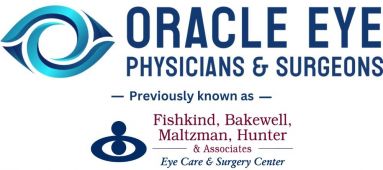
Orbscan/Corneal Topography
Ocular coherence tomography (OCT) uses laser light to image the structures of the eye, including the retina, optic disc, cornea, and iris. This technology functions somewhat like radar, using light instead of radio waves. Light passes into the eye where it is either absorbed or reflected by tissue. Different structures reflect different amounts of light, which is then received by a detector within the OCT instrument. The patterns of reflected light are analyzed by computer and assembled into very detailed images. The device “optically sections” the structures, providing images which appear very similar to microscopic cross-sections obtained by surgically slicing tissues. The latest version of OCT technology, known as spectral domain OCT, can resolve structures down to approximately five microns, smaller than a human red blood cell.
OCT has numerous applications within the eye. It is most commonly used to image the retina, the multi-layered light-sensitive tissue in the back of the eye. OCT has revolutionized the diagnosis of retinal diseases, as it can very accurately identify the exact location of pathology within or between the many layers of the thin retina. Additionally, the effects of treatment can be directly monitored simply by repeatedly scanning the retina with OCT.
In glaucoma, OCT can help identify thinning of the retinal nerve fiber layer, the thin sheet of nerve tissue which spreads out from the optic nerve and which is damaged in the disease. Thinning of this layer, along with characteristic changes in optic nerve appearance, suggests glaucoma. Repeated OCT scans performed over a number of years can identify progressive nerve fiber thinning, the hallmark of glaucoma damage.
At Fishkind, Bakewell & Maltzman we use the Zeiss Cirrus® spectral domain OCT, the current state-of-the-art in OCT scanning. Testing is performed very simply:
- Dilation is usually NOT required for this test.
- Information, such as your name, age, and certain ocular measurements, is entered into the computer.
- Sit at the device with your forehead and chin comfortably positioned against rests.
- The technician performing the test will give you instructions, and will ask you to look into the device at a blinking fixation target.
- You will be asked not to blink for appoximately three seconds as each eye is scanned. You may notice some dim blinking light from within the device.
- When the test is complete you are free to go. Results will be mailed to you after your doctor has reviewed them, and will be discussed at your next visit.
- This test typically takes about 15 to 20 minutes to complete, but does vary with the number of scans required.
